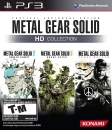Let me start by apologizing, as I made some mistakes yesterday when discussing this matter.
Sirius87 said:
If you only install the games once, you only write them once to the NAND/SSD. Of course there can't be enough space to install all your games to the NAND permanently. And you initially talked about parts of the games (not everything has to be stored on such a fast storage; texture streaming works as long as the textures are on the NAND). So 10GB may be reasonable on average (or maybe it's 20GB, but it doesn't really matter).
As long as you don't swap the games you play so often that you have to reinstall games around daily to your NAND, you won't write that much data on a SSD. What will not be possible is to treat NAND as Ram. Writing data during gaming needs to be heavily restricted. So what's installed to the NAND needs to be mostly static during gaming.
|
The problem when discussing this, is the amount of NAND that consoles will have.
If they have up to 16 or even 32GB then it is pretty obvious that it will be used as storage for OS, DLCs, PSN/Live games and patches as well as game saves. Using it to install retail games won't be viable because we will only have room for 1 (if lucky). We will need another kind of storage, just like WiiU allows you to use an external HDD. If that's the case then this discussion is almost pointless.
And while texture streaming could benefit from this, we know that the same can be done from the optical disk in the background freeing some precious RAM. So if they can do that wihtout the need of using NAND, then why having it? That will only increase the cost of the console.
And if they go with 64 GB or more, the cost will start to be too high to make it a viable option.
Sirius87 said:
Oh and SSDs don't really get slower after writing data to them. Only Sandforce-SSDs use the so called Durawrite (Level 1 sets in after ~1 full capacity write to the SSD, and Level 2 a lot later than that), which makes writing to the NAND slower. And writing isn't really important with games (and 90% of other applications). It's only a method to reduce the wearing down of the NAND. Non-Sandforce SSD only get slower if Trim doesn't work or after a really large amount of data got written and the first errors start to kick on (that usually happens after the specified P/E cycles are exhausted).
The NAND also doesn't lose its capability to be written after the specified write cycles are used up. The specifications say that consumer SSDs need to hold data for at least a year without power as long as the specified P/E cycles aren't exhausted. An easy way to ensure that even afterwards, would be to forbid to write to the SSD after that point. But that's not implemented in any SSD firmware as far as I know. You can essentially write to a SSD until the point is reached where the system can't communicate with the SSD anymore because the read errors get out of control (see the link in my previous post for examples).
|
Correct, I mixed thoughts between write and read.
Sirius87 said:
Trim support of course will be a requirement (but I don't see why that shouldn't be possible). GC is only important if you don't have Trim. Newer SSDs most of the time have really bad GC because it doesn't really matter anymore.
|
Well, here is a cause of the problem. So far only Windows 7 and 8 perform Trim without problems. Linux can also do it but you have to tinker the code and MAC can't use it at all. That means that the nextbox could have it but what about the PS4? That's why garbage collection will be important if they go with big SSDs.
Please excuse my bad English.
Currently gaming on a PC with an i5-4670k@stock (for now), 16Gb RAM 1600 MHz and a GTX 1070
Steam / Live / NNID : jonxiquet Add me if you want, but I'm a single player gamer.






















































